Discover 11 hidden attractions, cool sights, and unusual things to do in Glastonbury (United Kingdom). Don't miss out on these must-see attractions: Glastonbury Tor, Glastonbury Abbey, and Glastonbury Thorn. Also, be sure to include Chalice Well in your itinerary.
Below, you can find the list of the most amazing places you should visit in Glastonbury (England).
Table of Contents
Glastonbury Tor
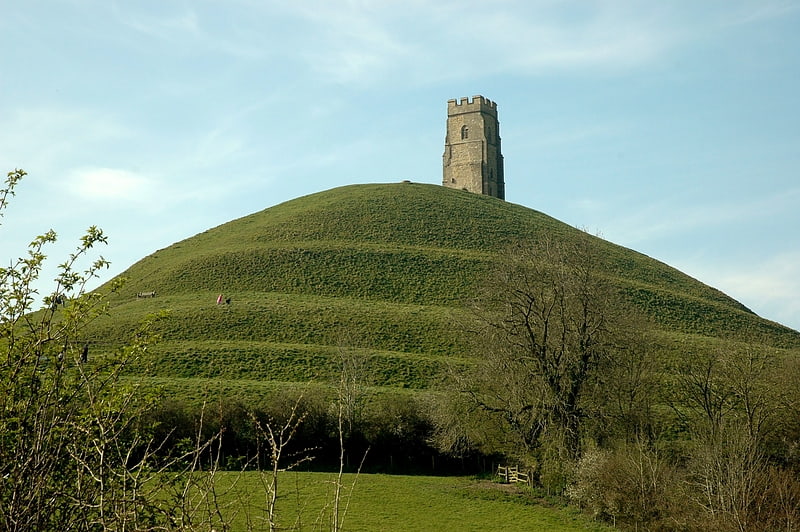
Terraced hill with church ruins. Glastonbury Tor is a hill near Glastonbury in the English county of Somerset, topped by the roofless St Michael's Tower, a Grade I listed building. The entire site is managed by the National Trust and has been designated a scheduled monument. The Tor is mentioned in Celtic mythology, particularly in myths linked to King Arthur, and has several other enduring mythological and spiritual associations.
The conical hill of clay and Blue Lias rises from the Somerset Levels. It was formed when surrounding softer deposits were eroded, leaving the hard cap of sandstone exposed. The slopes of the hill are terraced, but the method by which they were formed remains unexplained.
Archaeological excavations during the 20th century sought to clarify the background of the monument and church, but some aspects of their history remain unexplained. Artefacts from human visitation have been found, dating from the Iron Age to Roman eras. Several buildings were constructed on the summit during the Saxon and early medieval periods; they have been interpreted as an early church and monks' hermitage. The head of a wheel cross dating from the 10th or 11th century has been recovered. The original wooden church was destroyed by an earthquake in 1275, and the stone Church of St Michael was built on the site in the 14th century. Its tower remains, although it has been restored and partially rebuilt several times.[1]
Address: off Wellhouse Lane, Glastonbury
Glastonbury Abbey
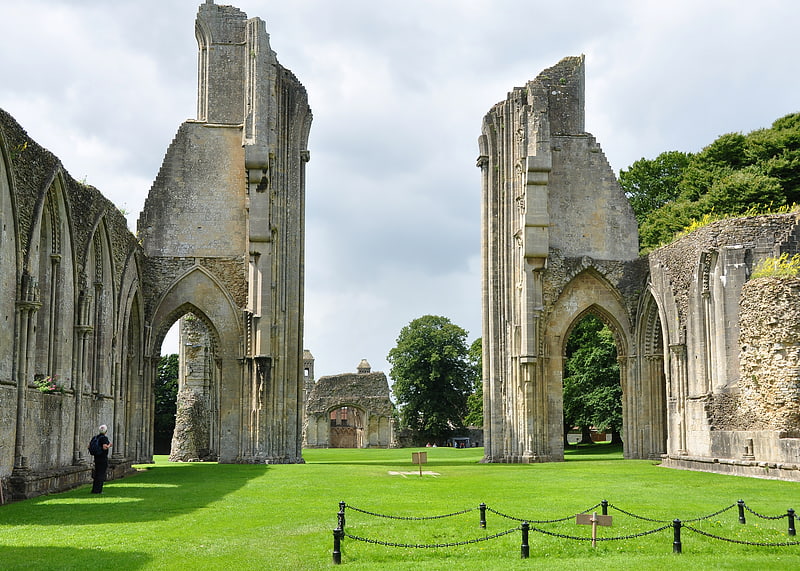
Ruined remains of a legendary abbey. Glastonbury Abbey was a monastery in Glastonbury, Somerset, England. Its ruins, a grade I listed building and scheduled ancient monument, are open as a visitor attraction.
The abbey was founded in the 8th century and enlarged in the 10th. It was destroyed by a major fire in 1184, but subsequently rebuilt and by the 14th century was one of the richest and most powerful monasteries in England. The abbey controlled large tracts of the surrounding land and was instrumental in major drainage projects on the Somerset Levels. The abbey was suppressed during the Dissolution of the Monasteries under King Henry VIII of England. The last abbot, Richard Whiting (Whyting), was hanged, drawn and quartered as a traitor on Glastonbury Tor in 1539.
From at least the 12th century the Glastonbury area has been associated with the legend of King Arthur, a connection promoted by medieval monks who asserted that Glastonbury was Avalon. Christian legends have claimed that the abbey was founded by Joseph of Arimathea in the 1st century.[2]
Address: Magdalene St, BA6 9EL Glastonbury
Glastonbury Thorn
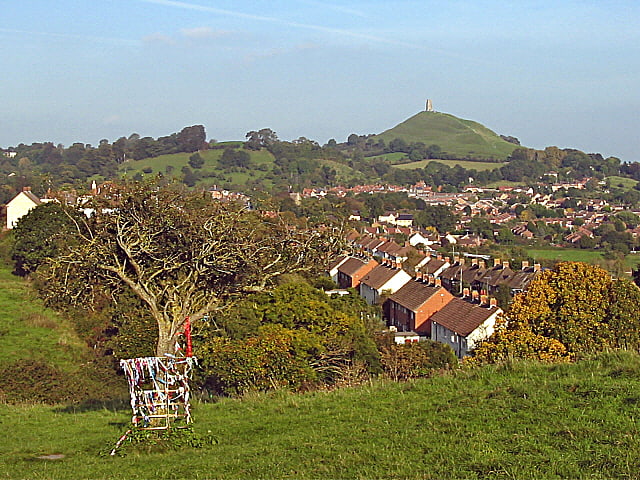
The Glastonbury thorn is a form of common hawthorn, Crataegus monogyna 'Biflora', found in and around Glastonbury, Somerset, England. Unlike ordinary hawthorn trees, it flowers twice a year, the first time in winter and the second time in spring. The trees in the Glastonbury area have been propagated by grafting since ancient times. The tree is also widely called the holy thorn, though this term strictly speaking refers to the original tree.
It is associated with legends about Joseph of Arimathea and the arrival of Christianity in Britain, and has appeared in written texts since the medieval period. A flowering sprig is sent to the British Monarch every Christmas. The original tree has been propagated several times, with one tree growing at Glastonbury Abbey and another in the churchyard of the Church of St John. The "original" Glastonbury thorn was cut down and burned as a relic of superstition during the English Civil War, and one planted on Wearyall Hill in 1951 to replace it had its branches cut off in 2010.[3]
Chalice Well
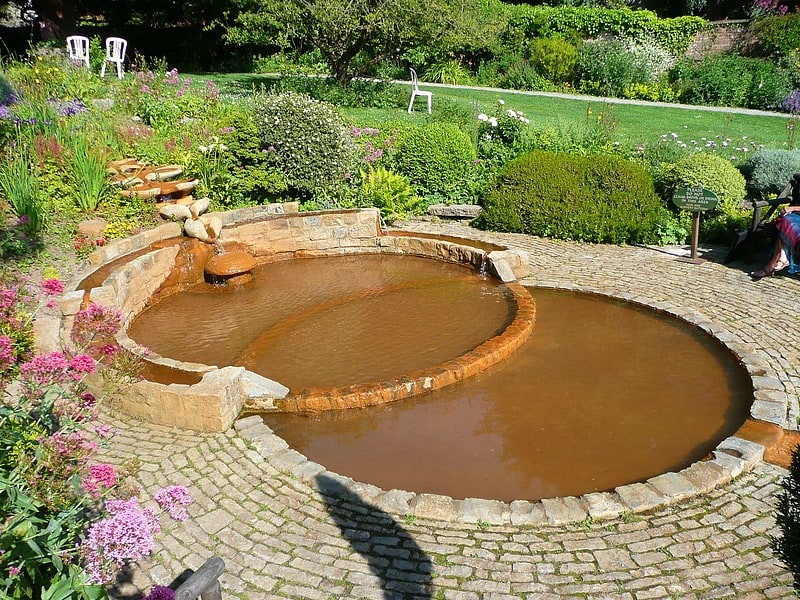
Garden in Glastonbury, England. The Chalice Well, also known as the Red Spring, is a well situated near the summit of Chalice Hill, a small hill next to Glastonbury Tor in Glastonbury, Somerset, England. The natural spring and surrounding gardens are owned and managed by the Chalice Well Trust, founded by Wellesley Tudor Pole in 1959.
Research by Exeter University School of Geology in 2009 found that the Chalice Well is fed by a deep aquifer in the lower levels of the Pennard Sands.[4]
Address: Wellhouse Lane, BA6 8BL Glastonbury
St Johns

Building. Described as "one of the most ambitious parish churches in Somerset", the present Church of St John the Baptist in Glastonbury, Somerset, England, dates from the 15th century and has been designated as a Grade I listed building.[5]
Glastonbury Market Cross
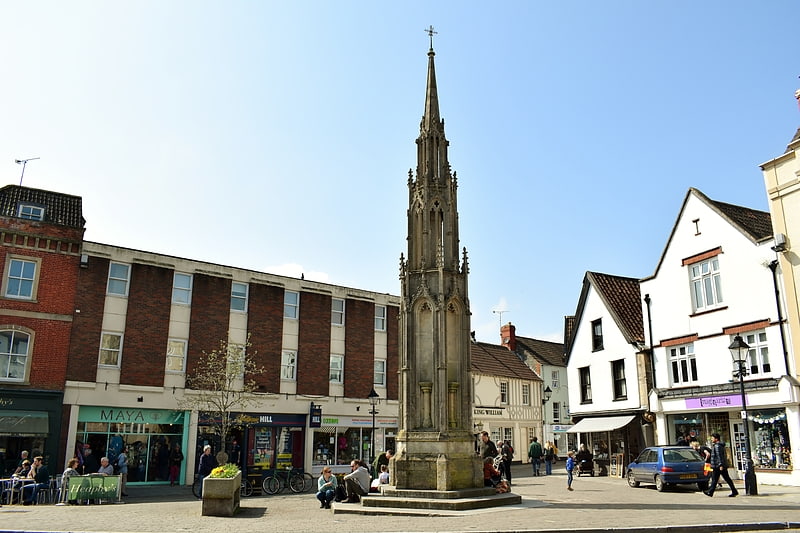
Glastonbury Market Cross is a market cross in Glastonbury, Somerset, England. Erected in 1846, it was designed by the English architect Benjamin Ferrey and has been a Grade II listed structure since 1950.[6]
Hospital of St Mary Magdalene
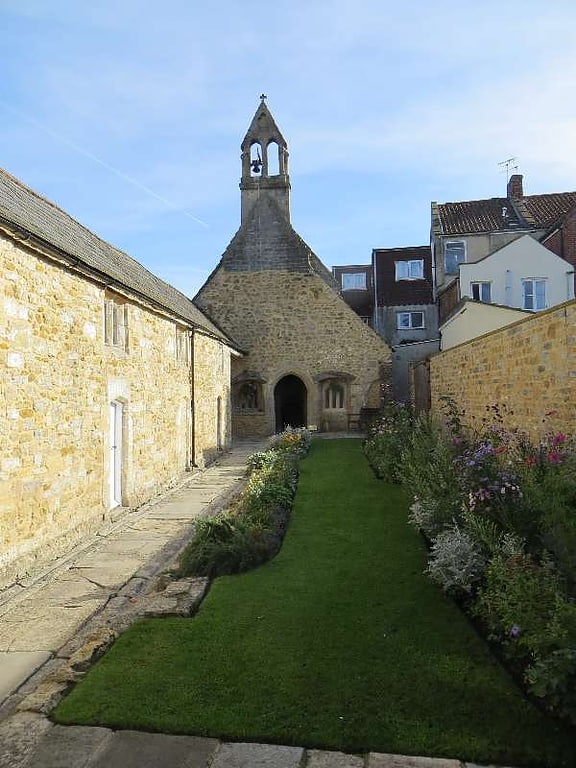
The Hospital of St Mary Magdalene in Glastonbury, Somerset, England was built around 1310 by Glastonbury Abbey. It is a Grade II* listed building, and part has been scheduled as an ancient monument.[7]
Church of St Benedict

Anglican church in Glastonbury, England. The Anglican Church of St Benedict at Glastonbury within the English county of Somerset was built as a Norman chapel in the 11th century with substantial additions in the 15th and 19th centuries. It is a Grade I listed building.[8]
Address: 29 Benedict St, BA6 9NB Glastonbury
Abbot's Kitchen
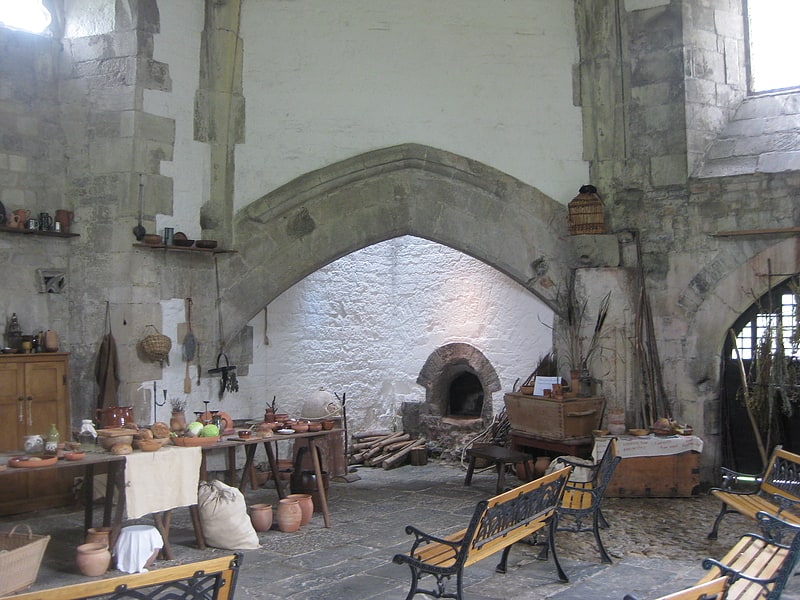
Museum in Glastonbury, England. The Abbot's Kitchen is a mediaeval octagonal building that served as the kitchen at Glastonbury Abbey in Glastonbury, Somerset, England. It is a Grade I listed building. The abbot's kitchen has been described as "one of the best preserved medieval kitchens in Europe". The stone-built construction dates from the 14th century and is one of a very few surviving mediaeval kitchens in the world.
Historically, the Abbot of Glastonbury lived well, as demonstrated by the abbot's kitchen, with four large fireplaces at its corners. The kitchen was part of the opulent abbot's house, begun under Abbot John de Breynton (1334–1342). It is one of the best preserved medieval kitchens in Europe and the only substantial monastic building surviving at Glastonbury Abbey. The abbot's kitchen has been the only building at Glastonbury Abbey to survive intact. Later it was used as a Quaker meeting house.
The building is supported by curved buttresses on each side leading up to a cornice with grotesque gargoyles. Inside are four large arched fireplaces with smoke outlets above them, with another outlet in the centre of the pyramidal roof. The building is designed so that hot air from the cooking fires would have risen up to the top of the building and escaped, whilst cooler air came from openings lower down and sunk into the kitchen, cooling it.
The kitchen was attached to the 80 feet (24 m) high abbot's hall, although only one small section of its wall remains. The architect Augustus Pugin surveyed and recorded the building in the 1830s. The Abbot's Kitchen was again surveyed and conserved in 2013, reopening in 2014.[9]
Somerset Rural Life Museum
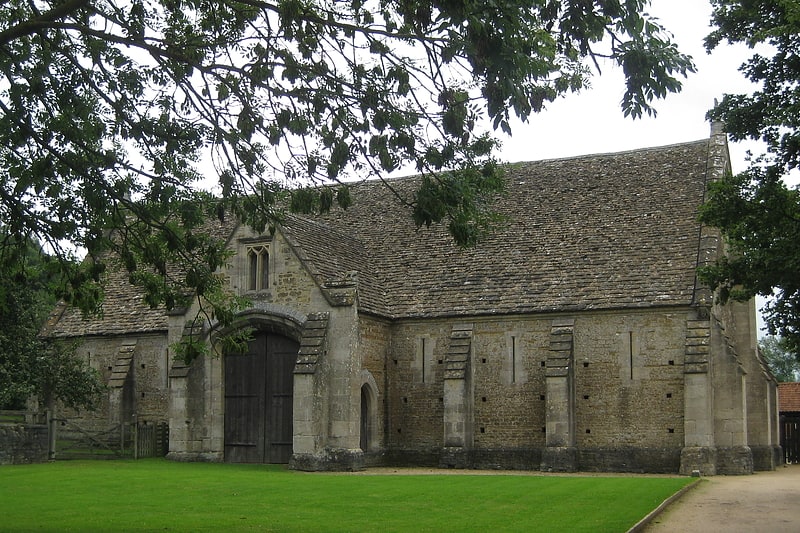
Museum in Glastonbury, England. The Somerset Rural Life Museum is situated in Glastonbury, Somerset, UK. It is a museum of the social and agricultural history of Somerset, housed in buildings surrounding a 14th-century barn once belonging to Glastonbury Abbey.
It was used for the storage of arable produce, particularly wheat and rye, from the abbey's home farm of approximately 524 acres (2.12 km2). It is not believed to have stored produce offered as tithe payments and is therefore referred to as an abbey barn rather than a tithe barn. Threshing and winnowing would also have been carried out in the barn.
The barn which was built from local 'shelly' limestone, with thick timbers supporting the stone tiling of the roof. It has been designated by English Heritage as a grade I listed building, and is a Scheduled Ancient Monument. In 2011 the 14 feet (4.3 m) high doors of the barn were replaced by local craftsmen using materials and traditional techniques and materials to a design based on The Bishop's Eye in Wells.
After the Dissolution of the Monasteries in 1539 the barn was given to the Duke of Somerset. By the early 20th century it was being used as a farm store by the Mapstone family. In 1974 they donated it to Somerset County Council and between 1976 and 1978 underwent restoration. It was also used as the location for the pistol duel in Stanley Kubrick's "Barry Lyndon", released in 1975.
The barn and courtyard contain displays of farm machinery from the Victorian or early 20th Century period. Other exhibits show local crafts, including willow coppicing, mud horse fishing on the flats of Bridgwater Bay, peat digging on the Somerset Levels, and the production of milk, cheese, and cider. In reconstructed rooms detailing domestic life in the nearby village of Butleigh, the story of one farm worker, John Hodges, is told from cradle to grave.
Outside, there is a beehive and rare breeds of poultry and sheep, in the cider apple orchard. Regular craft demonstrations and talks on farming are held, as are activities for children and families. There is a shop, tea room, car park and disabled access. The shop is run by the Friends of the Somerset Rural Life Museum.[10]
The Tribunal
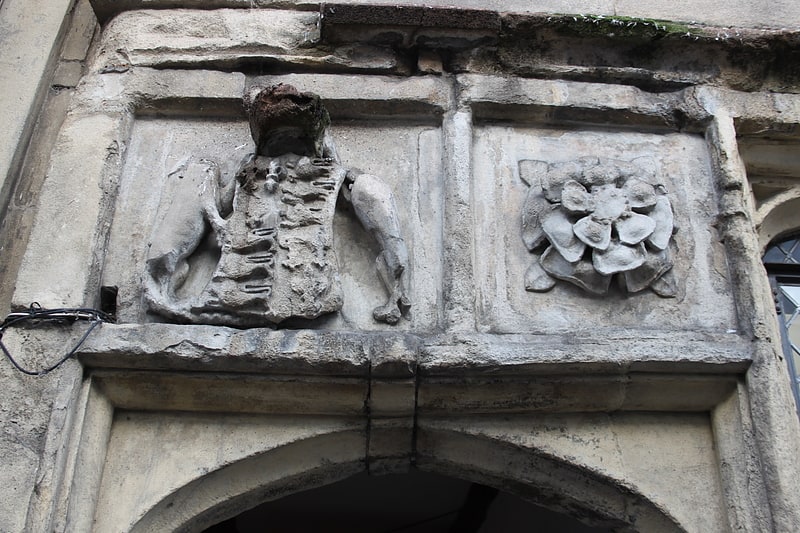
Museum in Glastonbury, England. The Tribunal in Glastonbury, Somerset, England, was built in the 15th century as a merchant's house. It has been designated as a Grade I listed building.
The history of the building is not well documented, although the majority of the present stone house was constructed in the 15th century on the site of a 12th-century wooden building. The current front wall was added in the 16th century. It has been used as a merchant's house and possibly a shop and school. It was thought that it was the venue for court proceedings, hence the title Tribunal, however there is no evidence this ever occurred. One of the ground floor rooms still has the window and ceiling panels from the Elizabethan era. The front room upstairs has an arched braced, wooden, truss roof.
The building is currently in the guardianship of English Heritage and used as a tourist information centre. On the first floor is the museum of the Glastonbury Antiquarian Society which houses artefacts from Glastonbury Lake Village including the "Glastonbury Bowl". The bottom part of the bowl dates from the Iron Age and the upper part was added in the 1st century AD.[11]